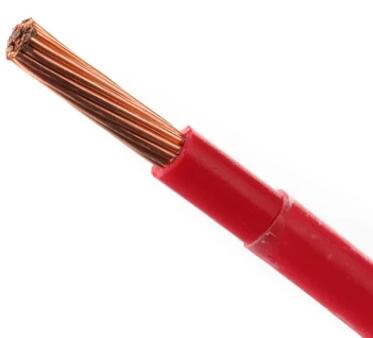Unveiling the Wonders of Electric Wires: The Backbone of Modern Electrical Systems
2023-11-01
Introduction
Electric wires are an integral part of our daily lives, yet they often go unnoticed, hidden within the walls and structures that make our modern world function. These unassuming conductors play a critical role in transmitting electrical energy, powering our homes, businesses, and gadgets. In this blog, we will explore the fascinating world of electric wires, shedding light on their importance, types, and the vital role they play in our electrical infrastructure.
The Basics of Electric Wires
Electric wires, also known simply as wires, are cylindrical conductors made from highly conductive materials like copper or aluminum. These conductors are responsible for transmitting electrical current from one point to another in electrical circuits. The core function of an electric wire is to provide a path for the flow of electricity, allowing devices, appliances, and systems to operate.
Types of Electric Wires
1. Insulated vs. Uninsulated Wires: Electric wires can be either insulated or uninsulated. Insulated wires are covered with a protective layer, often made from materials like PVC (polyvinyl chloride), rubber, or Teflon, to prevent electrical contact or short circuits. Uninsulated wires, on the other hand, lack this protective covering and are typically used in specialized applications.
2. Solid vs. Stranded Wires: Wires can be classified as solid or stranded. Solid wires consist of a single, solid conductor, making them suitable for applications that require fixed and stable connections. Stranded wires, on the other hand, are composed of multiple smaller strands twisted together, offering greater flexibility and durability, ideal for applications that involve frequent movement or bending.
3. Copper vs. Aluminum Wires: Copper and aluminum are the most commonly used materials for wire conductors. Copper wires are known for their excellent conductivity and corrosion resistance, making them ideal for most applications. Aluminum wires are used in specific situations due to their lighter weight and lower cost, but they require special considerations to prevent oxidation.
4. Wire Gauges: Wires come in various sizes and are often categorized using the American Wire Gauge (AWG) system. Smaller AWG numbers represent thicker wires with lower resistance, while higher AWG numbers indicate thinner wires with higher resistance. Choosing the right wire gauge is crucial to ensure proper current-carrying capacity and prevent voltage drop in electrical circuits.
The Significance of Color Coding
Color coding is a standardized method used to identify the function and characteristics of electric wires. In most cases:
- Black or Red: These colors are often used for hot or live wires carrying current from the power source to the load.
- White or Gray: White or gray wires typically represent neutral wires, completing the electrical circuit and providing a return path for current.
- Green or Bare: These colors denote ground wires, designed to protect against electrical faults and ensure safety by directing excess current to the earth.
Safety Considerations
Working with electric wires requires a strong emphasis on safety. Here are some essential precautions to keep in mind:
1. Shut Off Power: Before working with wires, always turn off the power at the source to prevent electrical shocks.
2. Wear Protective Gear: Use appropriate safety gear, such as insulated gloves and goggles, when handling wires.
3. Proper Wire Size: Ensure the wire's gauge is appropriate for the current load to prevent overheating and fires.
4. Secure Insulation: Never expose live wires, and ensure the insulation is intact to prevent electrical shorts.
5. Professional Assistance: For complex electrical work, it's advisable to seek professional assistance from licensed electricians.
Conclusion
Electric wires may remain hidden from our view, but their significance cannot be overstated. They are the unsung heroes that power our world, enabling the conveniences and technologies we rely on daily. Understanding the different types of wires, their color-coding, and the safety measures associated with them is essential for anyone dealing with electrical systems. Whether you're a homeowner or a professional electrician, a basic knowledge of electric wires is crucial for maintaining a safe and efficient electrical infrastructure.



